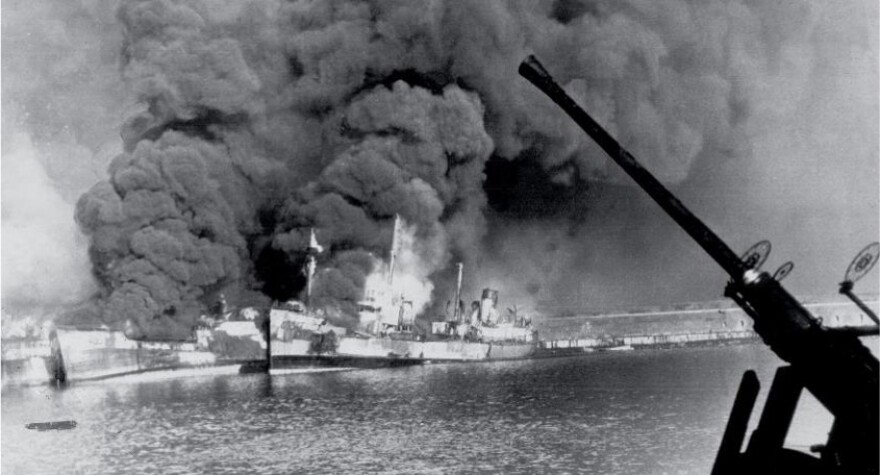On December 2, 1943, the harbor of Bari, Italy, was packed with Allied oil tankers and cargo ships.
The Allies, believing the Luftwaffe to be severely depleted, considered the odds of a German air attack to be remote. Only one anti-aircraft battery defended the city.
Recognizing an enormous opportunity, the Luftwaffe attacked Bari at dusk with over 100 warplanes.
German bombs set off explosions amongst the closely anchored ships, laden with fuel and ammunition. Seventeen vessels were sunk and the attack became known as the “second Pearl Harbor.”
It would be hard to imagine matters growing even worse. But then they did.
During the attack, men struggling in the water noticed a pungent odor — the distinctive smell of garlic, or perhaps mustard. No one knew what to make of it.
The reason was top-secret. One American Liberty ship had held a cargo of 2,000 mustard-gas bombs.
When the ship was hit, an explosion sent a poisonous cloud wafting over the city. In the water, toxic fluid coated hundreds of sailors swimming for their lives.
Over 600 men were hospitalized with mustard poisoning. Many had chemical burns and blisters. Others suffered severe conjunctivitis and blindness.
The Allies tried to cover up the mustard-gas disaster, but an Army physician named Stewart Alexander deduced that only chemical weapons could explain the men’s injuries. An intact American bomb containing mustard toxin was retrieved from the bottom of the harbor, confirming his suspicions.
Alexander also made another surprising discovery. He noticed his patients’ white blood cell counts were extremely low. He deduced that mustard gas had harmed patients’ bone marrow, where white blood cells are produced.
Then he thought, if mustard could do this, what could it do for a person with leukemia? Leukemia is a form of cancer characterized by white blood cell overproduction.
In 1944, U.S. scientists conducted a clinical trial of cancer patients treated with a derivative of the chemical used in mustard gas, leading to the first FDA-approved cancer chemotherapy, called “Mustargen,” five years later.
It was the vanguard of a new class of drugs called alkylating agents, which are still used to combat cancer today.
At Bari, hundreds of Allied servicemen lost their lives — but their sacrifice continues to serve us.
Andrew Lam, MD is a retina surgeon from Longmeadow, Massachusetts. His latest book, "The Masters of Medicine: Our Greatest Triumphs in the Race to Cure Humanity’s Deadliest Diseases," tells the stories of some of the most important discoveries in medical history.






